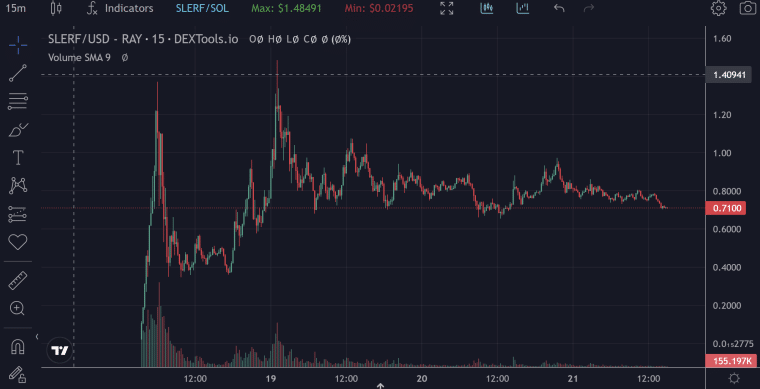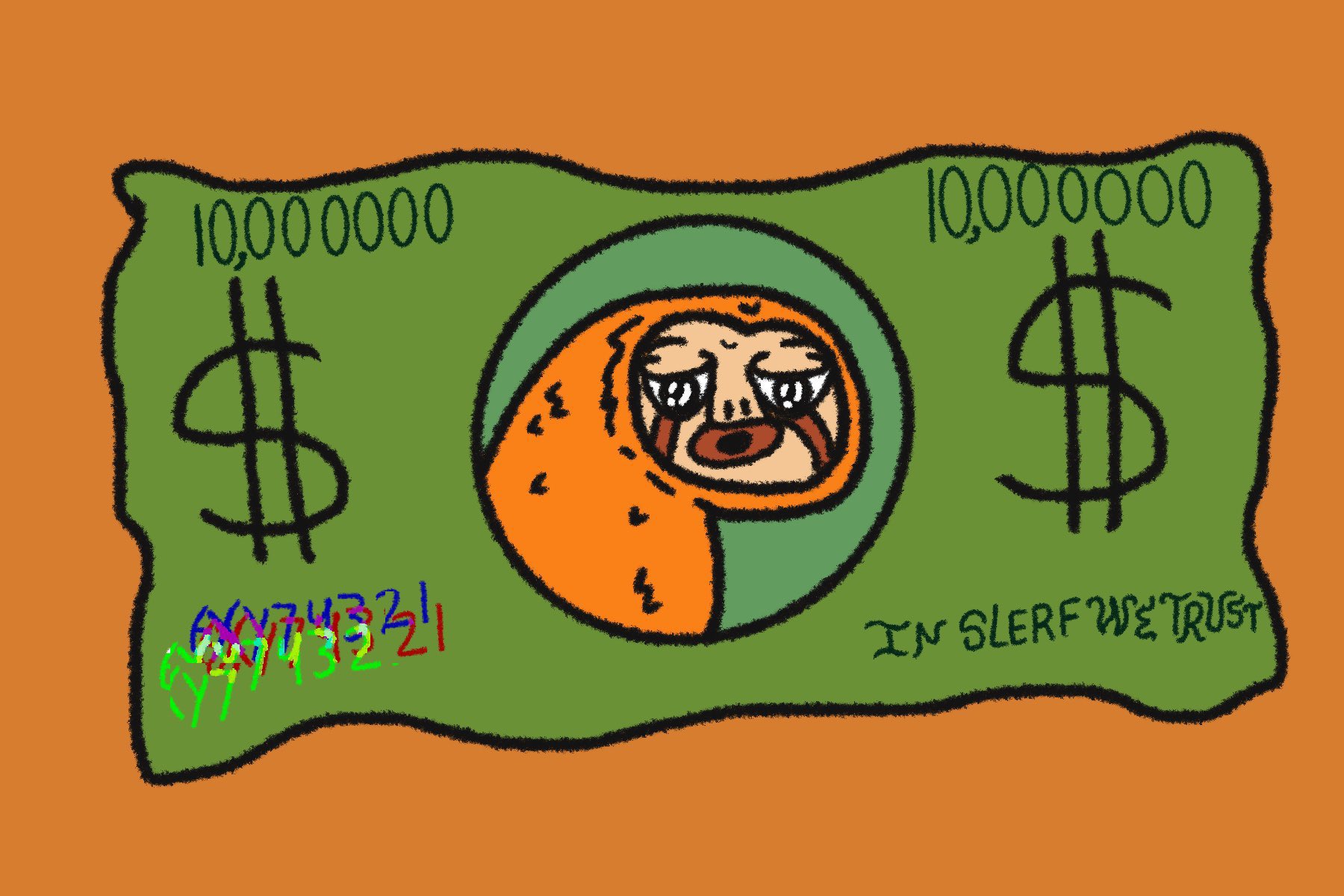In a dramatic turn of events, the developers of the Solana-based meme coin $SLERF have found themselves in a precarious situation after an operational ‘mishap’ led to the accidental burning of over $10 million worth of funds that were destined for investors as part of an initial airdrop.
The incident, which sent shockwaves through the crypto community, has prompted major cryptocurrency exchanges like HTX (formerly Huobi), Bitget, and BingX to pledge support by donating trading fees to affected users to compensate for the losses.
The Slerf Saga: From Presale Success to $10M Burn
Slerf, the sloth-themed meme coin, initially gained traction by raising an impressive $10 million during its March 18th presale on the Solana blockchain. However, the celebration was short-lived as the project’s anonymous developer later took to social media to disclose a catastrophic error.
Guys I fucked up. I burned the LP and the tokens that were set aside for the airdrop.
Mint authority is already revoked so I can not mint them.
There is nothing I can do to fix this.
I am so fucking sorry.
— Slerf (@Slerfsol) March 18, 2024
In a candid admission, the developer revealed that they had accidentally sent the entirety of the presale funds, as well as the project’s liquidity pool tokens and airdrop allocation, to an irretrievable burn address. This mistake effectively destroyed over $10 million worth of investor’s funds, leaving no recourse for minting new tokens or issuing refunds.
This was truly as bad as it gets for founders. It would legitimately be difficult to screw up a cryptocurrency launch more. And the crypto community loved it for some reason, driving tons of engagement to Slerf as memes blew up crypto Twitter.
Crypto Exchanges Launch Refund Initiatives to Help Slerf
In response to the debacle, several major cryptocurrency exchanges have pledged to support the affected Slerf community by donating a portion of their trading fees from the token.
HTX Exchange, one of the first platforms to list Slerf, announced that it would donate all trading revenue generated from the meme coin to traders who participated in the non-public sale on its platform. Justin Sun, the founder of Tron network and an advisor to HTX, took to the social media platform X (formerly Twitter) to confirm the exchange’s commitment to this cause. “We will donate all Slerf trading revenue to presale participants.”, Sun pledged.
Following suit, Bitget’s managing director, Gracy Chen, also pledged to donate her platform’s trading fees to support the Slerf community. Singapore-based exchange BingX went a step further, not only promising to donate fees but also announcing plans for an airdrop of its future debut tokens to Slerf private sale participants who did not receive their tokens due to the burn incident.
Additionally, the LBank Exchange declared its commitment to raising funds to support presale participants, providing a dedicated wallet address for global crypto traders and investors to contribute funds that will be donated to those investors who were impacted.
“The Slerf team will have 0 access to this wallet. So funds are SAFU. This is not a presale, these are donations to support the burned”, the Slerf team wrote in a statement to appease investors who were impacted by the mishap.
Slerf Produces 40% Gains in 24 Hours After News of Accidental Token Burn
Despite the controversy surrounding the $10 million burn, Slerf’s token has seen a remarkable surge in value and trading activity. SLERF rose to nearly $1.5 Tuesday, producing 24-hour gains of well over 40% in just 24 hours.

Meanwhile, at the moment this is written, the meme coin is trading at $0.71 per token, booking a significant loss since its peak.
What is a bit staggering is that the coin boasted multiple days with over $1 billion trading volume, showcasing the impact of the intense ‘meme hype’ that is sweeping the crypto ecosystem at the moment and investors’ increased interest in these digital assets. It’s impossible to tell whether this all would have happened without the $10 million loss, but it seems likely that it helped propel the coin. It also helps that the presale buyers weren’t able to sell the tokens.
Slerf’s long-term value proposition is uncertain – to say the least – given its status as a meme coin with no identifiable and sustainable utility. However, the crypto community appears to be seizing the opportunity to speculate on the asset’s volatile price movements. Solana has become more of a casino than a blockchain network in recent weeks.
The Meme Coin Mania in the Solana Ecosystem is Getting Out of Hand
The Slerf saga is unfolding against the backdrop of a broader meme coin presale mania sweeping the Solana ecosystem. Since March 12th, according to on-chain investigator ZachXBT, a staggering 796,000 SOL (approximately $149 million at current prices) has been raised across 33 presales for various meme coin launches.
Update: Added a few more Solana presales from the replies that I missed and the total SOL raised is up to >796,000 SOL ($149.2M) from 33 presales. pic.twitter.com/O7dBqAunni
— ZachXBT (@zachxbt) March 19, 2024
Slerf’s presale ranked fourth among these, raising 54,583 SOL before the unfortunate burn incident. The top three presales were conducted by 0xDekadente (169,982 SOL), Dexter_Cap (159,782 SOL), and miladymemecoin (91,746 SOL).
Also read: Miss Out On the Last 1000x Memecoin? Here’s How Traders Find Them Early
This presale trend, largely driven by the fear of missing out (FOMO) on extraordinary price gains, has been a double-edged sword for investors. While some projects like the Book of Memes (BOME) have seen meteoric rises, surging by over 1,291,399% in less than two days to reach a market capitalization exceeding $1 billion, the risks associated with such investments are equally large (if not more so).
LBank’s Trust and Transparency Concerns
The Slerf incident has reignited discussions around the importance of trust and transparency in the cryptocurrency space, particularly when it comes to presales and how investors’ funds are handled by exchanges.
One aspect that has drawn scrutiny is Slerf’s choice of LBank Exchange as the custodian for its donation address. LBank has faced allegations of misappropriating user funds in the past, casting doubt on its reliability and raising concerns about the security of the donated funds.
A recent review of LBank performed by blockchain security firm Hacken in September 2023 highlighted critical issues including transparency concerns, security vulnerabilities, and potential market manipulation. The report concluded that “LBank is [an] unreliable exchange for crypto trading, due to apparently falsified liquidity and exploitable cybersecurity issues.”
LBank has been addressing many of these concerns. For example, the exchange announced the adoption of Merkle-tree proof-of-reserves to enhance asset security and transparency. However, given its past controversies, the Slerf initiative has raised eyebrows within the crypto community.
Expect Some Level of Regulatory Scrutiny After This
As the Slerf saga continues to unfold, the incident will likely attract regulatory scrutiny, particularly in light of the crypto presale mania and the potential risks that these offerings pose to investors.
Authorities may seek to investigate the circumstances surrounding the $10 million burn incident and the subsequent refund initiatives undertaken by exchanges. Questions may arise regarding the adequacy of investor protections and the potential for market manipulation or other fraudulent activities.
Furthermore, the broader trend of meme coin presales on the Solana network could come under regulatory scrutiny as well as authorities could aim to assess the risks associated with these speculative investments and the need for appropriate oversight and consumer protection measures.
Moving forward, the Slerf incident and the meme coin presale frenzy will likely intensify discussions around the need for greater transparency, accountability, and regulatory oversight in the cryptocurrency space, especially when it comes to protecting the interests of unwary retail investors.
